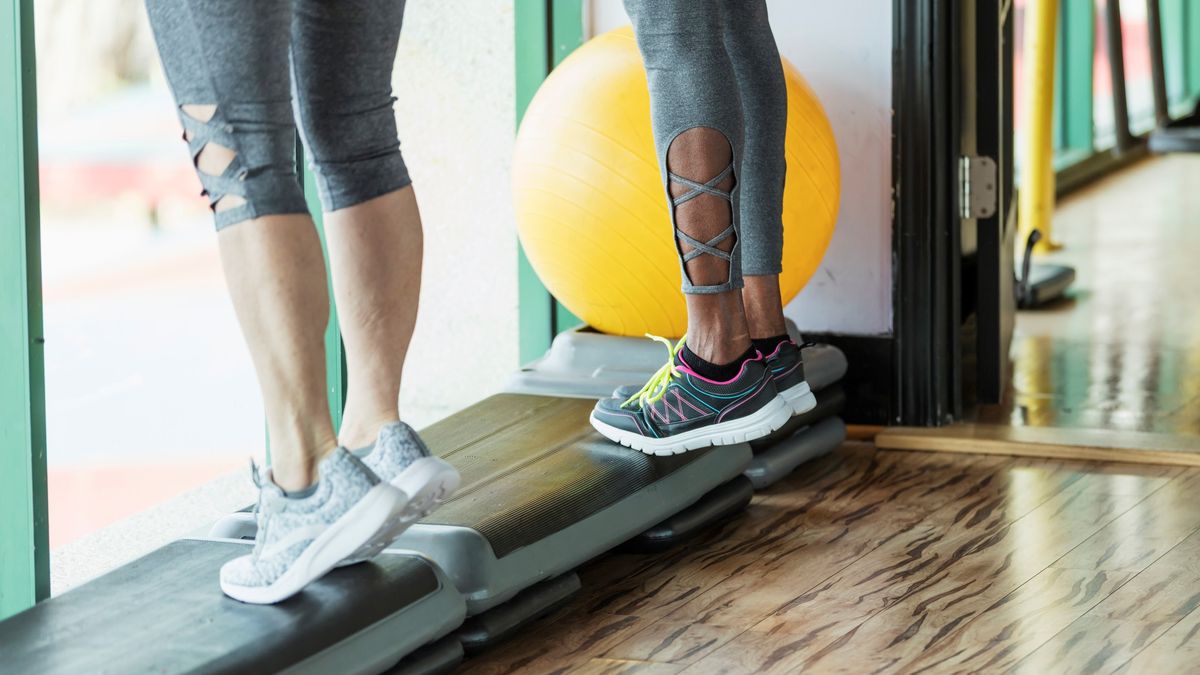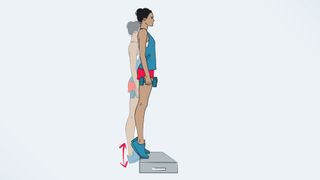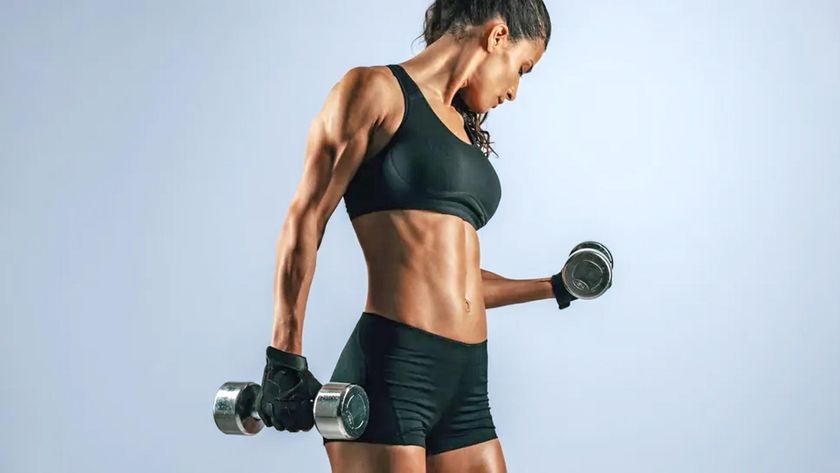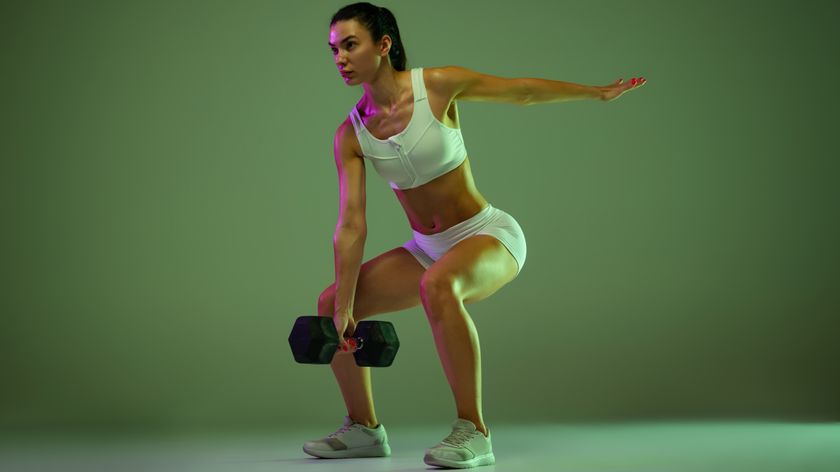I did 100 calf raises a day for a week — here’s what happened
I learned an important lesson

I don’t know about you, but I often forget to train my calves. Until now, they’ve not been something I’ve been overly concerned about as I squat, lunge, and deadlift. That said, a recent conversation with a run coach forced me to stop and think about my calf strength — your calf muscles absorb the impact when you’re running or walking and propel you forwards. They’re an essential component when it comes to lower body strength, so why was I neglecting them?
Never one to shy away from a challenge, I decided to add 100 calf raises a day to my routine for a week to see what happened. As a marathon runner, my schedule involves around five runs a week, as well as a couple of strength training sessions, and the odd Pilates or yoga class chucked in for good measure.
Before getting into the calf raises, it’s important to note that what works for me might not work for you and your body, and if you’re a complete beginner or you’re returning to exercise following an injury, it’s a good idea to check with a personal trainer to ensure you’re getting your form right.
Read on to find out what happened when I did 100 calf raises a day for a week. Inspired? Check out what happened when I did 100 dead bugs a day for a week, 30 sit-ups a day for 30 days, and when I added flutter kicks to my morning routine.
How to do calf raises
Let's start with how to get the technique right. To do a calf raise, start with your feet shoulder-width apart. Keep your back straight and your core engaged throughout the movement (here’s how to engage your core muscles). Rise up onto your tiptoes slowly, keeping your legs straight, without locking the knee joint. Pause at the top, then lower back to the ground, returning to your starting position.

The benefits of calf raises are that they hit both of the muscles in the calf. Your calf has two primary muscles — the soleus, which is the deeper calf muscle that starts just below your knee and runs down the leg, connecting to the Achilles tendon above the heel, and the gastrocnemius, which is the outer muscle that forms the bulk of your calf. Strengthening your calf muscles is important when it comes to injury prevention, as calf muscle strains are a common injury among athletes. When the soleus is weak, for example, studies have shown the calf muscle can strain and tear more easily.
I did 100 calf raises a day for a week — here’s what happened
On day one of this challenge, I started with regular, bodyweight calf raises. I opted for four sets of 25 raises, with a 30-second rest between each set. I did the raises post-run, without shoes on, and went pretty slow to really focus on my form. My challenge was to think about my posture — keeping your back straight and your abs engaged is essential in this exercise.
Sign up to get the BEST of Tom's Guide direct to your inbox.
Get instant access to breaking news, the hottest reviews, great deals and helpful tips.
On day two, I added the calf raises to my strength training routine — as it was leg day, after all. This time, I added some weights to the mix to up the ante a little. I grabbed a set of 6kg dumbbells, and again, did four sets of 25 calf raises. This definitely increased the challenge, and after the first 25 raises, I could feel my calf muscles working. Again, I had to concentrate on slowing down — while performing the exercise fast might be tempting, it makes it much less effective.
On day three, I opted to increase the range of motion in the calf raise by performing them on a step. Once again, I finished my run and stood at the bottom of my stairs to do the calf raises — this allows your heels to drop down further, increasing the intensity. With just the balls of my feet on the stairs, I definitely felt a greater stretch down my calves as I moved through the reps.
On day four, you guessed it, I added weights to my calf raises at the bottom of the stairs. This definitely felt a little sketchy, as I don’t live in a massive house with a wide open staircase, and in the future, I’d do weighted elevated calf raises on a step in the gym. Still, I got them done, I lived to tell the tale, and I didn’t fall down the stairs or smash a dumbbell into the wall. Result.
By day five, my calves were feeling it, so I went back to the regular bodyweight calf raises. It’s definitely not recommended to do huge reps of the same exercise day after day (here’s why experts say you shouldn’t do a squat challenge) but for the sake of journalism, I continued.
On day six, I again decided to mix things up again, this time opting to do my calf raises on the leg press machine in the gym. To do this, I placed the balls of my feet on the platform with my legs outstretched, and pushed onto my tiptoes, like I would in a standing calf raise. Doing calf raises on a leg press are a good way to increase the load, without worrying about your balance.
At last, day seven. By now, I was sick of calf raises, but wanted to try one more challenge — single-leg calf raises. I haven’t added these to my workouts since I injured my soleus years ago, and I hated them just as much now as I did then. As its name suggests, to do a single-leg calf raise, stand on one leg, and raise up onto the ball of one foot. I opted to do 100 on each leg but found I needed to do them near a wall, as I was definitely more balanced on my right leg (I’m right-handed).
So, what did I learn after 800 calf raises? I need to do more calf raises. Of course, I’m not going to see huge gains in a week — the human body doesn’t work like that, but I can definitely see how adding calf exercises into my workouts could help me run faster and (hopefully) ward off lower leg issues that might keep me from the start line.

Jane McGuire is Tom's Guide's Fitness editor, which means she looks after everything fitness related - from running gear to yoga mats. An avid runner, Jane has tested and reviewed fitness products for the past five years, so knows what to look for when finding a good running watch or a pair of shorts with pockets big enough for your smartphone. When she's not pounding the pavements, you'll find Jane striding round the Surrey Hills, taking far too many photos of her puppy.


